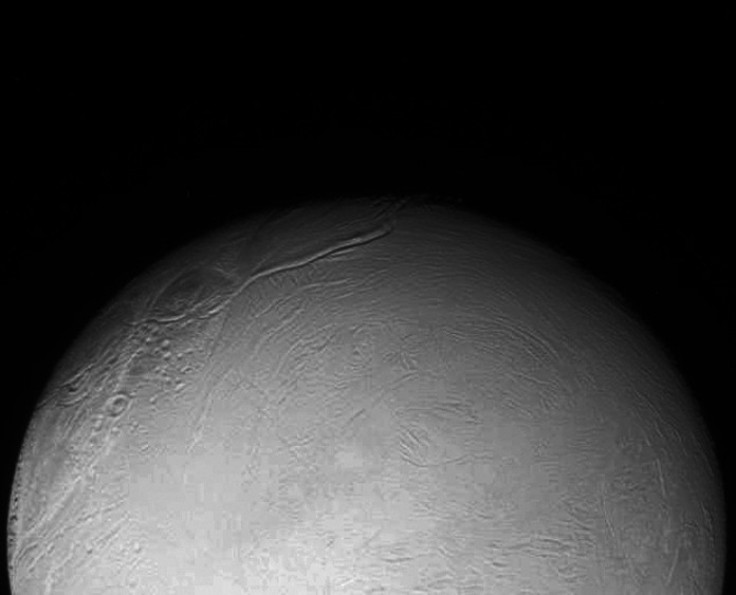Saturn's Snowy Moon Enceladus May Be Promising For Extraterrestrial Life

A detailed mapping of Saturn's moon Enceladus shows that the moon had had jets of water vapor and ice shooting from its south pole for up to 100 million years and is covered in a layer of powdery snow expected to be 100 meters deep, according to a study by scientists at the Lunar and Planetary Institute in Houston, Texas.
The scientists based their predictions on high-resolution images captured by NASA's Cassini spacecraft, combined with a model of jet activity. While discussing the images at a joint meeting of the European Planetary Science Congress and the American Astronomical Society's Division for Planetary Sciences in France on Oct. 3, Paul Schenk, a planetary scientist at the Lunar and Planetary Institute, said the findings boosts the odds that Enceladus contains a liquid ocean beneath its snowy surface. The existence of an ocean would make the moon one of the most promising places in our galaxy in which to search for signs of extraterrestrial life.
The Cassini flew within 62 miles of Enceladus on Oct. 1 in order to learn more about the plumes of water ice spraying from its south pole. The plumes were first spotted by the spacecraft in 2005 and are composed of water ice vapor with various salts and organic compounds, according to researchers.
A mapping of global color patterns and measurements of surface layer thickness shows that the ice particles that form in the water sprays fall back to the ground in a predictable pattern, Shenk said. In addition, the research suggests the plumes have a heat source that last for at least tens of millions of years.
The snow layer probably on grows by less than a thousandth of a millimeter per year, scientists said, meaning the buildup has been occurring for ages.
Shenck said the snowy particles themselves are extremely fine and only a fraction of a millimeter in size.
This would make for the finest powder a skier could hope for, he said.
Cassini is scheduled to pass by the moon again on Oct. 19 at an altitude of about 765 miles.
© Copyright IBTimes 2024. All rights reserved.











